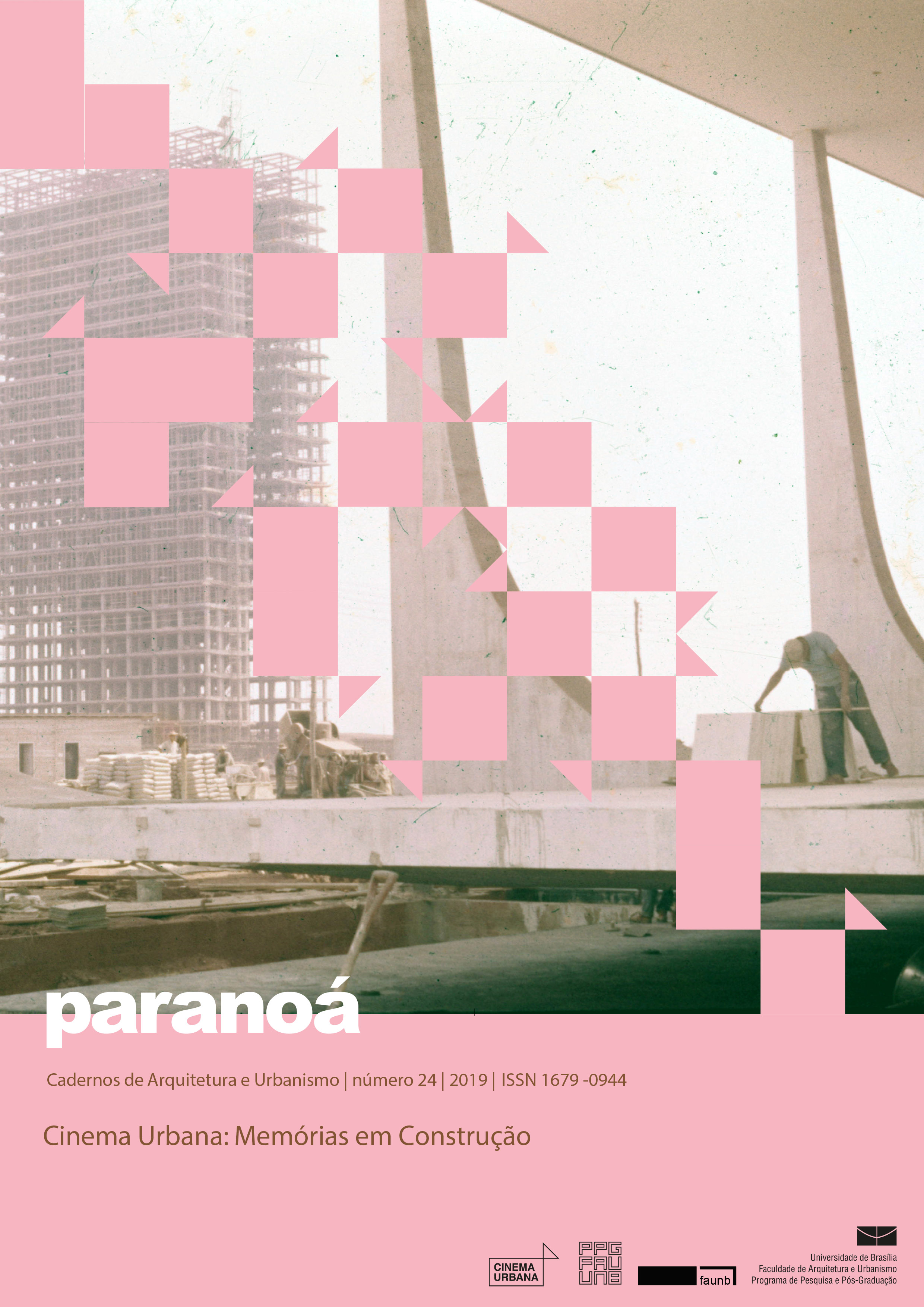Neo-Tokyo: Distopia Urbana e Cidades Genéricas
DOI:
https://doi.org/10.18830/issn.1679-0944.n24.2019.09Keywords:
Akira, Tokyo, Dystopia, Generic Cities, IdentityAbstract
In Akira (1988) we have a representation of the city of Tokyo (in this case Neo Tokyo) which serves as a valuable historical document about the imaginary regarding the transformations that Japanese culture, technology and cities went through during the second half of the XX century. By dealing with reflections related to the melting pot of socio-economic-cultural thinking in Asian megacities, the film dialogues with Rem Koolhaas' reflections on the formation and characteristics of the “Generic Cities”, exposed in S, M, L, XL, 1995. The loss of the identity of large Asian cities is discussed in this article by drawing a parallel between the texts of Koolhaas and the vision of Katsuhiro Otomo, screenwriter and director of the feature. The first part of this article deals with the importance of Akira in the formulation of a contemporary imaginary related to the city of Tokyo, as well as the capacity that this work has in capturing and representing issues related to the urban Japan of the period. In the second part there is a brief commentary on the Japanese culture and society of this period. The city of Neo Tokyo, itself, is the object of the third part, this dystopia being compared in several aspects to the utopia presented by Kenzo Tange in 1961, in his plan for the occupation of Tokyo Bay. Also in this third part, the aspects that bring the dystopian representation of the Asian mega metropolis closer to those explored by Koolhaas are observed in more detail. In the fourth and final part, there is a final commentary on the reasons why Japanese cyberpunk is so appealing to the Western public and its ability to synthesize and express the problems faced by large Asian cities.
Downloads
References
KOOLHAAS, Rem “The Generic City”. in: O.M.A., Rem Koolhaas, Bruce Mau (eds.), S, M, L, XL. Monacelli Press, 1995
AKIRA. Akira Committee Company Ltd. Direção e produção Katsuhiro Otomo. Tóquio: TMS Entertainment, 1988. (124 min), color: 35 mm.
AKIRA PREVIU A OLIMPÍADA DE TÓQUIO 2020 - Canaltech. Disponível em: <https://canaltech.com.br/entretenimento/akira-previu-as-olimpiadas-de-toquio-2020-78155/>. Acesso em 15 de abr. 2018
CRONOLOGIA DO PENSAMENTO URBANÍSTICO - Cronologia do urbanismo. Disponível em: <http://www.cronologiadourbanismo.ufba.br/>. Acesso em 2 de mai. 2018
REBUILDING NEO-TOKYO: THE SEARCH FOR NORMALITY IN THE APOCALYPSE OF AKIRA - The Manifold. Disponível em: <https://themanifold.wordpress.com/2012/01/20/rebuilding-neo-tokyo-the-search-for-normality-in-the-apocalypse-of-akira/>. Acesso em 20 de abr. 2018
REM KOOLHAAS SOBRE IDENTIDADE, CONFORMISMO E CIDADES DIGITAIS - Archdaily. Disponível em: <https://www.archdaily.com.br/br/898076/rem-koolhaas-sobre-identidade-conformismo-e-cidades-digitais>. Acesso em 5 de mai. 2018
SPECULATIVE URBANISM: MUST-READ MEGACITIES OF SCIENCE FICTION & FANTASY - 99 Percent visible. Disponível em: <https://99percentinvisible.org/article/speculative-urbanism-must-read-megacities-science-fiction-fantasy/>. Acesso em 12 de abr. 2017
THE BOSOZOKU ARE JAPAN'S DISAPPEARING REBELS WITHOUT A CAUSE - Jalopnik. Disponível em: <https://jalopnik.com/the-bosozoku-are-japans-disappearing-rebels-without-a-c-1642416129>. Acesso em 2 de mai. 2018
Downloads
Published
How to Cite
Issue
Section
License
Autores que publicam nesta revista concordam com os seguintes termos:
- Autores mantém os direitos autorais e concedem à revista o direito de primeira publicação, com o trabalho simultaneamente licenciado sob a Licença Creative Commons Attribution que permite o compartilhamento do trabalho com reconhecimento da autoria e publicação inicial nesta revista. http://creativecommons.org/licenses/by/4.0
- Autores têm autorização para assumir contratos adicionais separadamente, para distribuição não-exclusiva da versão do trabalho publicada nesta revista (ex.: publicar em repositório institucional ou como capítulo de livro), com reconhecimento de autoria e publicação inicial nesta revista.
- Autores têm permissão e são estimulados a publicar e distribuir seu trabalho online (ex.: em repositórios institucionais ou na sua página pessoal) a qualquer ponto antes ou durante o processo editorial, já que isso pode gerar alterações produtivas, bem como aumentar o impacto e a citação do trabalho publicado (Veja O Efeito do Acesso Livre).















